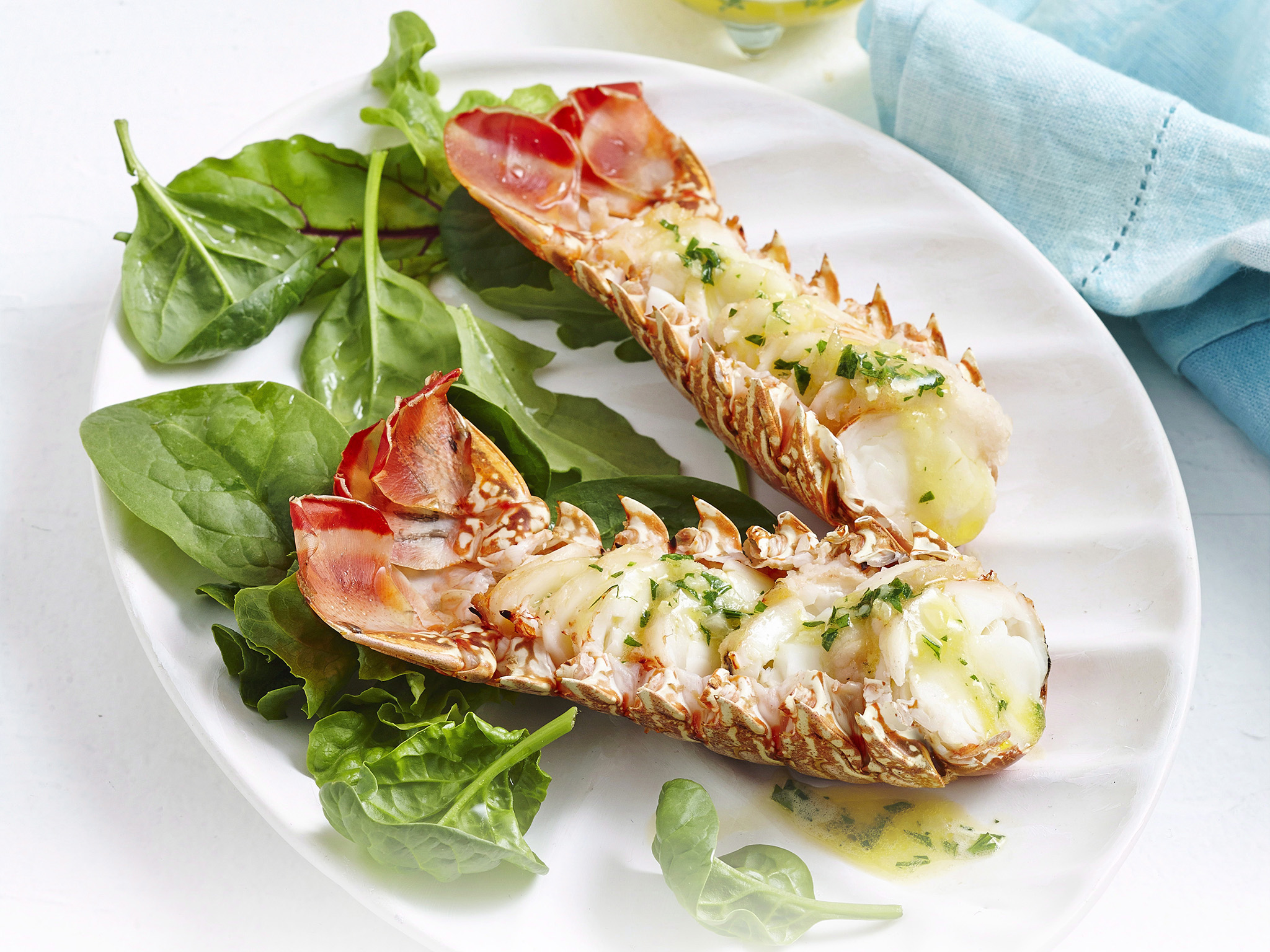Types
There are two main types of lobster tails available on the market: warm-water and cold-water. Understanding the difference between these two can help you make an informed choice:
- Warm-Water Lobster Tails: These are typically sourced from regions like the Caribbean, South America, and Florida. Warm-water tails tend to be less expensive but may not be as sweet or tender as cold-water varieties. The texture can also be slightly tougher, and there’s a higher chance of the meat being mushy if not cooked properly.
- Cold-Water Lobster Tails: Sourced from colder regions like Maine, Canada, and New Zealand, cold-water lobster tails are prized for their superior quality. The meat is firmer, sweeter, and less prone to becoming rubbery when cooked. Although cold-water tails are more expensive, they offer a better dining experience for those who seek top-notch flavor and texture.
For the best results, opt for cold-water lobster tails when you want a premium, restaurant-quality meal.
Fresh vs. Frozen Lobster Tails
Another important decision is whether to buy fresh or frozen lobster tails. Each option has its advantages, but knowing which suits your needs can enhance the final dish.
- Fresh Lobster Tails: These are typically more expensive and harder to find, depending on your location. Fresh tails offer unbeatable taste and texture, but they must be cooked quickly after purchase to maintain their quality. If you live near the coast or have access to a reputable seafood market, fresh tails are an excellent choice.
- Frozen Lobster Tails: Frozen tails are the more common and convenient option. Modern freezing techniques ensure that the tails retain much of their flavor and texture, and frozen options are often more affordable. They also have a longer shelf life, allowing you to store them until you’re ready to cook. Just make sure to thaw them properly before cooking to avoid any loss of quality.
In many cases, frozen lobster tails provide the best balance of convenience and quality, especially for those who don’t live near the coast.
Size Matters: Choosing the Right Size of Lobster Tail
Lobster tails come in various sizes, and the one you choose will impact both the cooking time and portion size. Here’s how to decide:
- Small (3-5 oz.): Perfect for appetizers or light meals. These tails cook quickly and are ideal for dishes like lobster rolls or salads.
- Medium (6-8 oz.): A great all-around option for most meals. They provide a generous serving of lobster without being too large, making them perfect for grilling, broiling, or baking.
- Large (10 oz. and up): Ideal for a luxurious, indulgent meal. These tails can be shared or served as the main feature on the plate. However, be mindful that larger tails require longer cooking times and can be tricky to cook evenly without drying out the meat.
The size you choose depends on the occasion and how you plan to serve the lobster. For a special dinner, medium to large lobster tails will impress your guests.
Sustainability and Sourcing
In recent years, sustainability has become an important consideration for many seafood consumers. Overfishing and environmentally harmful practices can deplete lobster populations and damage marine ecosystems. To make a responsible choice, look for lobster tails that have been certified by organizations like the Marine Stewardship Council (MSC). These certifications ensure that the seafood has been harvested using sustainable methods, protecting both the species and their habitats.
Also, check the packaging or ask your supplier about where the lobsters were sourced. Lobster from regions with sustainable fishing practices, like Maine and Canada, is often a more ethical choice.
How to Cook
Once you’ve chosen the perfect lobster tails, it’s time to cook them. Popular cooking methods:
- Grilling: Perfect for a smoky flavor, grilling is a popular method. Simply brush the tails with butter or oil, season them, and cook on medium heat until the meat is opaque.
- Broiling: For a quick and easy method, broiling tails under high heat in the oven gives them a slightly charred, caramelized flavor.
- Steaming or Boiling: If you want to preserve the natural sweetness of the lobster, steaming or boiling is a simple, foolproof method.
Whichever method you choose, be careful not to overcook the lobster, as it can become tough and chewy.
Your Source for Quality

When it comes to sourcing high-quality lobster tails, Seafood Direct has you covered. Sourcing seafood from around the globe, Seafood Direct delivers premium frozen seafood directly to your doorstep, ensuring that you receive the freshest and finest products available. With a wide selection of seafood, including tails, Seafood Direct makes it easy to create a restaurant-quality meal at home.
Conclusion
Choosing the best lobster tails for a perfect meal doesn’t have to be complicated. By understanding the differences between warm-water and cold-water tails, deciding between fresh or frozen, and considering factors like size, sustainability, and sourcing, you can select tails that suit both your taste and budget. And with the variety of cooking methods available, you’ll have no trouble creating a delicious and memorable dish. Happy cooking!





